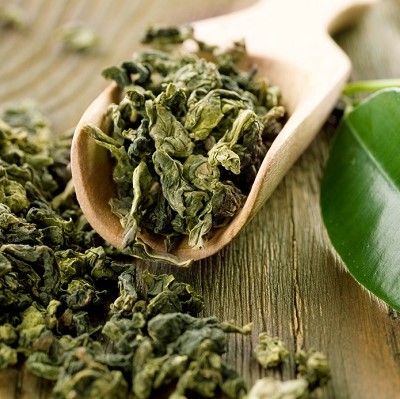 The best beverage you should drink is actually pure water but if you want to decrease your blood pressure, drinking green tea might be your best bet. Green tea can not only hydrate you but it is better for you nutritionally than even plain water can be.
The best beverage you should drink is actually pure water but if you want to decrease your blood pressure, drinking green tea might be your best bet. Green tea can not only hydrate you but it is better for you nutritionally than even plain water can be.
Be sure to use green tea and not black tea, as green tea is higher in polyphenol antioxidants, which help prevent diseases and lessen the aging process, and account for up to 30 percent of the total weight of the green tea leaf.
Among the polyphenols are compounds known as flavonoids, which contain catechins. One of the best catechins known is called epigallocatechin-3-gallate (EGCG), which is found in green tea in high quantities. EGCG is an antioxidant that has a positive effect on a wide variety of conditions and illnesses.
The polyphenols in green tea act on various molecular pathways to turn off the production of tumor cells and prevent their spread. They also turn off the growth of the blood vessels that supply cancerous tumors.
ECGC is an anti-angiogenic and anti-tumor molecule that helps tumor cells respond better to chemotherapy. ECGC has also been found to be beneficial in preventing arteriosclerosis, heart attacks, stroke, and cerebral thrombi by having the ability to relax the arteries in the brain and improve the blood flow to the brain.
Green Tea Can Naturally Lower the Blood Pressure
Research out of the British Journal of Nutrition revealed that those individuals that drank a lot of green tea had significantly lower blood pressure when compared to people who did not drink green tea. This was borne out in 25 separate controlled trials looking at the benefits of eating green tea on blood pressure.
After drinking green tea for 12 weeks, the blood pressure was lowered by an average of 2.6 points in the systolic blood pressure and by 2.2 points in the diastolic blood pressure. Green tea was found to have the best benefit in lowering the blood pressure, while plain black tea was second best in this effect.
By reducing the systolic blood pressure by 2.6 points, the risk of stroke can be expected to decrease by 8 percent and the risk of death due to coronary artery disease can be decreased by 5 percent. Death from any type of disease can be expected to decrease by 4 percent among those who drank green tea on a regular basis.
No one knows exactly how much green tea is necessary to achieve these types of blood pressure reductions. In most studies, the participants needed to drink three to four cups of green tea each day in order to have an adequate reduction in blood pressure to decrease the mortality rate. Drinking this amount of tea can reduce the risk of heart disease, including stroke and heart attacks. It does this by relaxing the blood vessels so that the blood flows freely to the coronary cells. It also decreases the rate of blood clotting.
Other Health Benefits of Drinking Green Tea
Besides affecting blood pressure, green tea has many other health benefits. The catechins in green tea have many health benefits and good green tea contains many of these antioxidants. Besides having a positive effect on the cardiovascular system, green tea has been found to regulate fat metabolism, increasing the oxidation of fat in fat cells, thereby preventing obesity. Green tea can also improve your ability to exercise, which can lower blood pressure and can decrease obesity.
One 2010 study out of the European Journal of Clinical Nutrition revealed that ECGC increased fat oxidation by 33 percent, which is a good way to lose weight. It increases the excretion of fat from the body and blocks the development of fat cells. This has a positive effect on blood pressure as one’s blood pressure naturally goes down as weight is reduced.
A lowering of weight also has a positive impact on the development of diabetes. This may mean that drinking green tea can help prevent diabetes as well as lowering the blood pressure, both of which decrease the rate of heart disease in the body. It also seems to increase the function of the brain and may be protective against degenerative diseases of the brain, such as Alzheimer’s dementia.






